DC Comics is trying something new. In the wake of their Rebirth initiative, the publisher has rapidly expanded its content to include diverse new imprints such as Young Animal, Wildstorm, Black Label, Ink, and Zoom. As their lineup expands, it can be hard to figure out what to pick up each week. That’s what our team is here to help with, every Wednesday, with the DC Round-Up!
THIS WEEK: Alex reviews Heroes in Crisis #1.
Note: the reviews below contain **spoilers**. If you want a quick, spoiler-free buy/pass recommendation on the comics in question, check out the bottom of the article for our final verdict.
 Heroes in Crisis #1
Heroes in Crisis #1
Writer: Tom King
Artist: Clay Mann
Colorist: Tomeu Morey
Letterer: Clayton Cowles
Over the course of the last several years, Tom King has proven to be one of the most topical and resonant writers in contemporary mainstream comics. His previous work on titles such as Sheriff of Babylon and Omega Men has seen him and his artistic collaborators tackle conflicts in the Middle East. Mister Miracle is an in depth exploration of depression and fatherhood, among other subjects. And now there’s Heroes in Crisis, King’s attempt to explore PTSD alongside artistic collaborator Clay Mann (with Lee Weeks and Mitch Gerads announced for additional issues of the series).
A book like Heroes in Crisis is tricky to talk about because in some ways, the publicity campaign surrounding the title has grown larger than the book itself. And in the midst of that publicity campaign, it came out that Heroes in Crisis would start with a massacre– a mass shooting. In the wake of crisis after crisis in Las Vegas, Parkland, Capital Gazette, and more, it’s clear that any attempt to broach this subject in a story has to be done with care and respect. Arguably, superheroes are the wrong venue for this type of story entirely, what with their bright costumes and exaggerated personas. Thus, the question for review Heroes in Crisis becomes twofold– how well does it function as the first issue of a 9-issue story and how well does it treat the sensitive subject matter it seeks to explore?
Well, to the first question, I have to admit that I’m not dissatisfied, but I’m also not on the edge of my seat. While King’s stories have rarely proven to be explosive in their first issues, they’ve generally been thematically dense, offering the reader a great deal to chew on as they wait for subsequent issues. By comparison, Heroes in Crisis #1 feels like a quick read. We’re not introduced to the concept of Sanctuary, a place designed for heroes to address traumas they sustain on the job, so much as we have the concept of it hinted at to us in the wake of the massacre that opens the series. The entirety of the story here is aftermath. We get scenes that focus on Harley Quinn and Booster Gold, the leads of the series, combating with each other for reasons that aren’t revealed until the end of the issue. Those scenes are broken up by scenes that showcase the members of the Trinity converging on sanctuary and brief interstitials that showcase some patients at Sanctuary going through therapy. It’s all well paced and interesting material, but there was no sense of propulsion to the plot here– it almost felt like a prologue rather than a first issue.
Perhaps that’s by design, as Heroes in Crisis‘ insistent focus on aftermath is successful at leaving the reader with a sense of soberness and loss. There’s an argument to be made for wanting to leave the reader feeling languid and dazed by the haze of losing so many legacy characters from the DC Universe. Tonally, that makes sense, but some of that sense of loss is undermined by the fact that in order to feel what Heroes in Crisis #1 wants to you feel, you need to be attached to the characters you lose already. This story, unlike most King has told before, necessitates that a reader’s emotional attachment to the DC canon do some of the heavy lifting for it– which is a bit of a bummer given how well most of King’s previous stories have stood alone.
Moreover, there’s a sense of discord between the way that Sanctuary is presented to us in Heroes in Crisis #1 and the way that the series has been advertised in the publicity leading up to the event. As I mentioned previously, how Sanctuary works or what Sanctuary is isn’t discussed in Heroes in Crisis #1 so much as it is hinted at. And arguably, again, the mystery of what Sanctuary is very well might be integral to the plot of the story– perhaps there’s a twist on what Sanctuary actually is that will recharacterize it in our eyes (we get some hints that that might be the case in this opening issue). However, it’s strange then that we have learned so much about the concept of Sanctuary from the publicity surrounding Heroes in Crisis only to have almost none of that information translated to the page here. It further emphasizes how much this opening issue feels like a prologue than a first chapter.
All that said, on a scene by scene basis, Heroes in Crisis does a lot that’s good as well. The interstitials where we get to see superheroes confess their traumas and desires are emotionally captivating and play to King’s greatest strengths as a writer. Mann proves more than capable of making page after page of people turning their heads and changing their facial expressions captivating to watch. And there’s one of these scenes in particular that is bookended by two pages that combine to tell an emotionally heartwrenching story arc by themselves, recalling and refraining lines of dialogue to emotionally weaponize language in a way that few other than King can do.
On the other hand, the Booster Gold and Harley Quinn scenes are relatively breezy from a thematic standpoint. King mostly turns these pages over to Mann and colorist Tomeu Morey, who turn in page after page of vibrant diner-exploding action. It’s awesome visual play that is deftly executed, but I can’t help but feel that, personally, these pages might have been better used to further flesh out the context for this story. I know that superhero comics are, ultimately, action driven affairs, but when you approach stories from as interior an angle as King tries to do, you lose a lot of space in an issue if you devote real estate to comparatively sparse, albeit visually interesting, action sequences. And making that trade off has a real cost.
Between all of this are the scenes with the Trinity at Sanctuary itself. Here, Morey steals the show as he renders pages after page of violent tragedy in warm sunset tones, giving the crime scene the necessary respect and somberness it needs to work. The violence depicted on the page is brutal, but not exploitative. It doesn’t revel or hold the reader’s gaze on the bodies of the victims of the massacre for too long. Instead it focuses mostly on the Trinity’s reaction to what they’re seeing, and King makes sure to give each of these three heroes a powerful moment. All that said, their purpose in their story is less clear than Booster’s and Harley’s, the two lead suspects behind the killings. There’s a big mystery introduced for the Trinity to solve, but what actions they plan to take remain painfully unclear.
Finally, to the other question I posed at the start of this piece: does Heroes in Crisis treat its topic, mass shootings and PTSD, respectfully? Honestly, I don’t think I can answer that question. There’s nothing in this first issue to indicate that it does not, but the struggle with reviewing single issues is that we won’t really know if it fails or succeeds to explore these topics with respect until all is said and done.
All I can say for now is that Heroes in Crisis is probably not for the faint of heart. It’s a well-rendered story that aims to hit painfully close to home on an issue that America, at least, has been forced to grapple with on a near-constant basis over the last few years. There’s many ways that all of this could go terribly wrong. However, if any writer in comics can explore what Heroes in Crisis is trying to with a sense of dignity and nuance, it’s going to be Tom King. He and his collaborators have an interesting road ahead of them and I’m looking forward to seeing what they do with the pieces that they’ve set up.
Verdict: Browse, leaning towards Buy
 Round-Up
Round-Up
- Doomsday Clock #7 is probably the best issue of the series so far, give or take the first issue. We finally get some real payoff to the mystery of where Dr. Manhattan has been, although there’s still a great deal left to the imagination. There’s some solid character work done with the Watchmen lead characters although the DC side of the equation literally gets left out of those conversations. I’m still somewhat puzzled as to where this story will take us, however– the stakes of saving the Watchmen world feel a bit removed now that we’ve spent so much time in the DC world, where things are equally terrible for different reasons. That said, Gary Frank continues to steal my heart.
- I loved Justice League: Odyssey #1 WAY more than I expected to. It’s a really goofy book that follows directly in the vein of Justice League: No Justice, but completely commits to the shonen vein of storytelling. We see our heroes tap into bigger and bigger powers, meet bigger and bigger threats, and finally get confronted by Darkseid himself– who wants to help them?! And our leads are gods?! It’s wacky and fun and I want more.
Miss any of our earlier reviews? Check out our full archive!


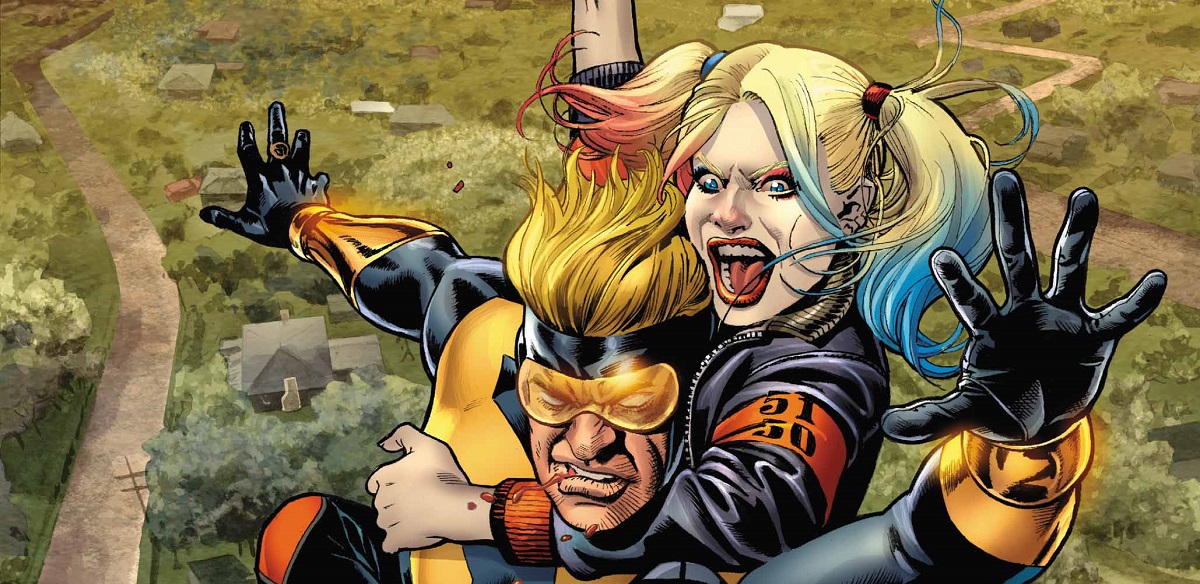
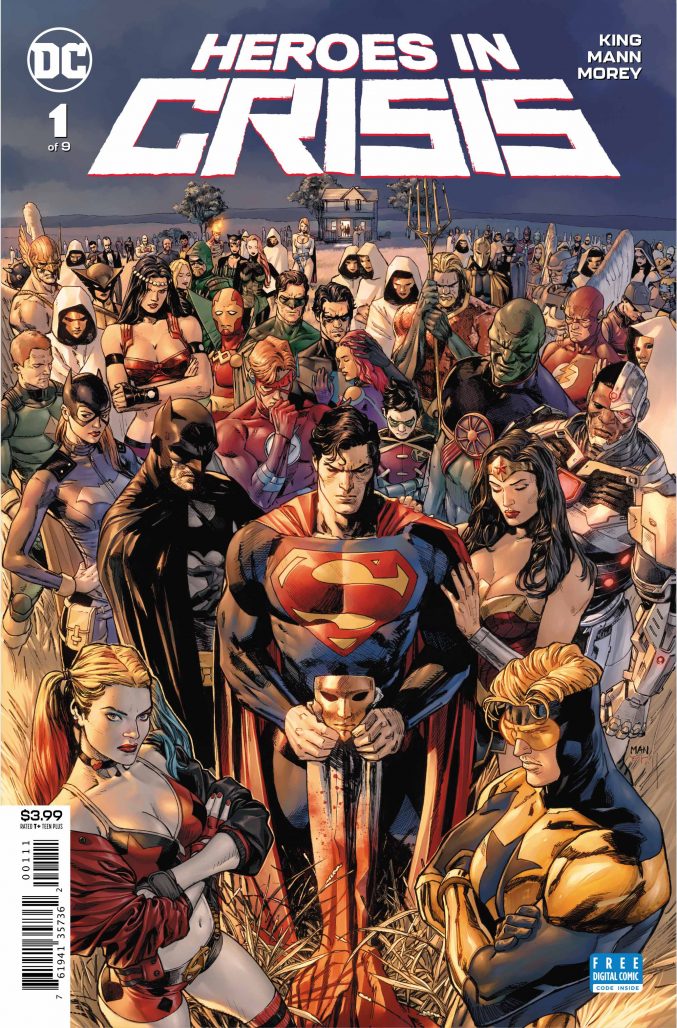
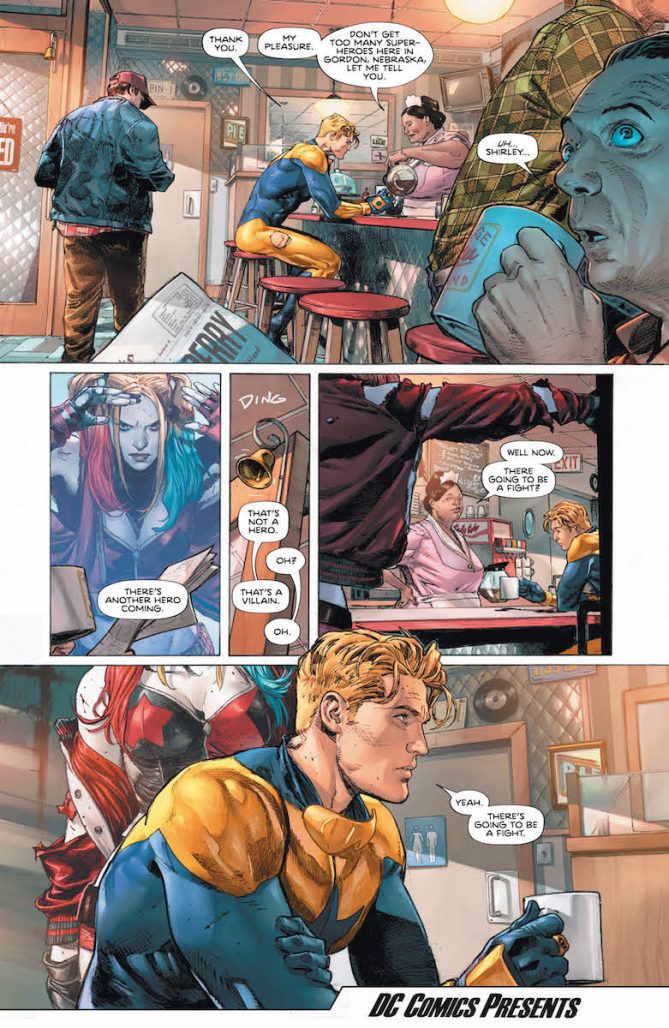

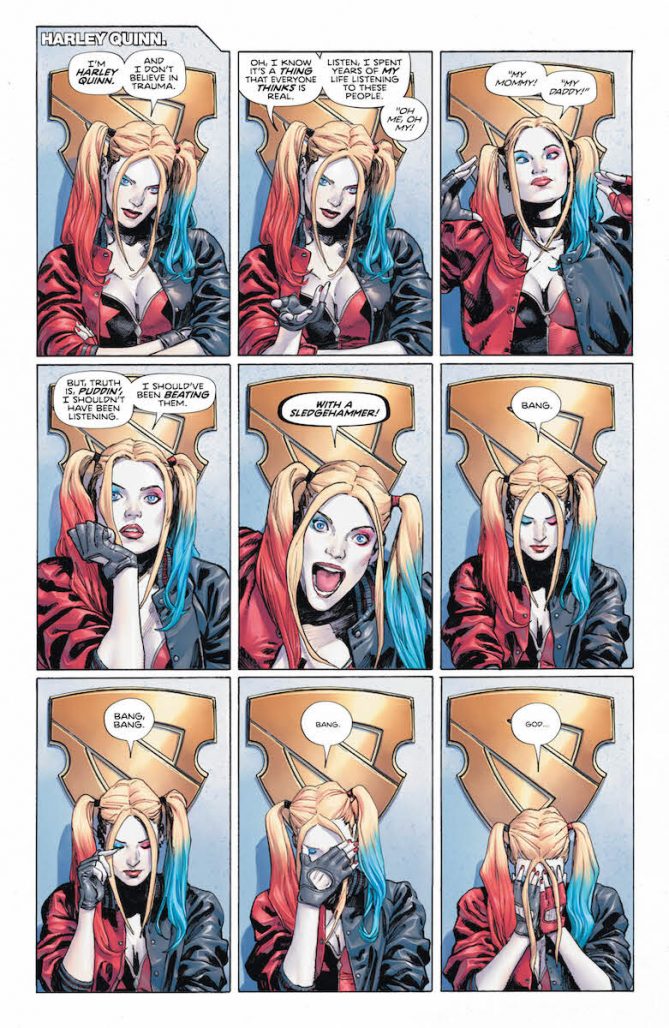
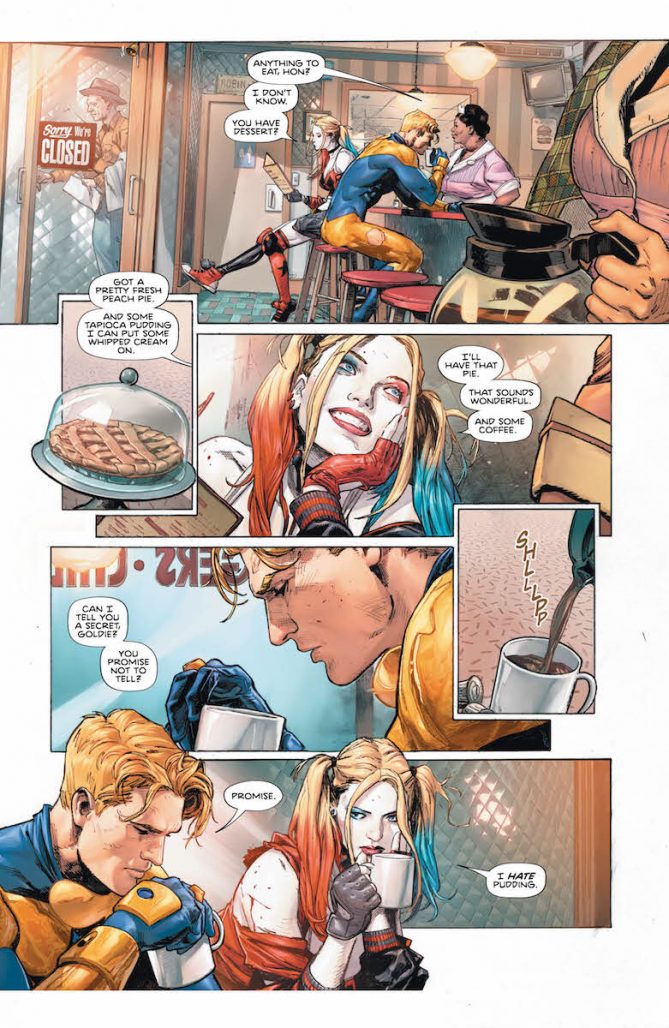
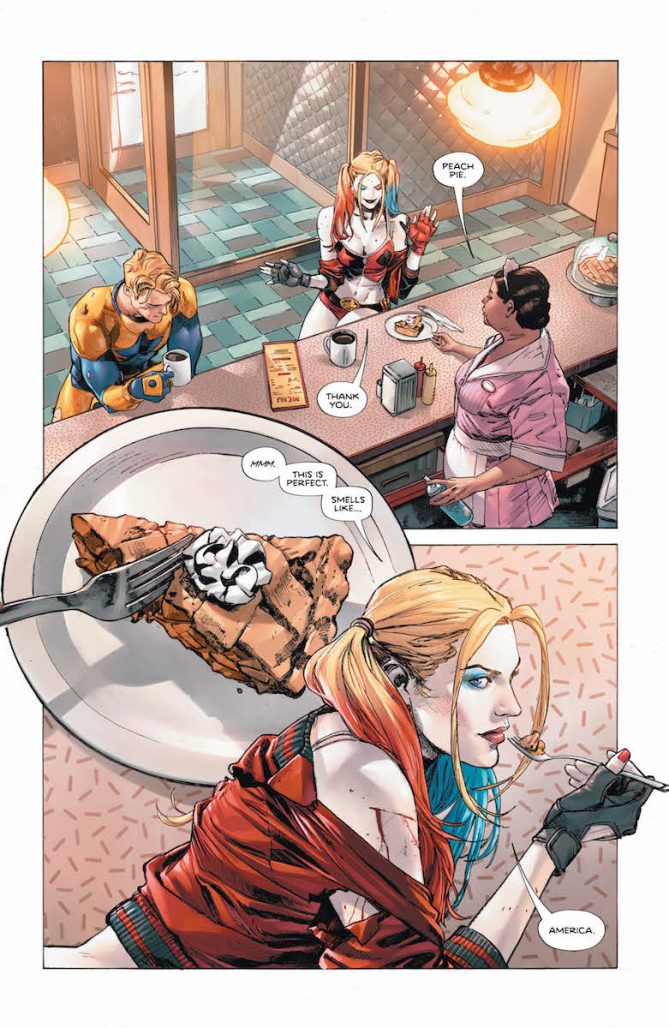
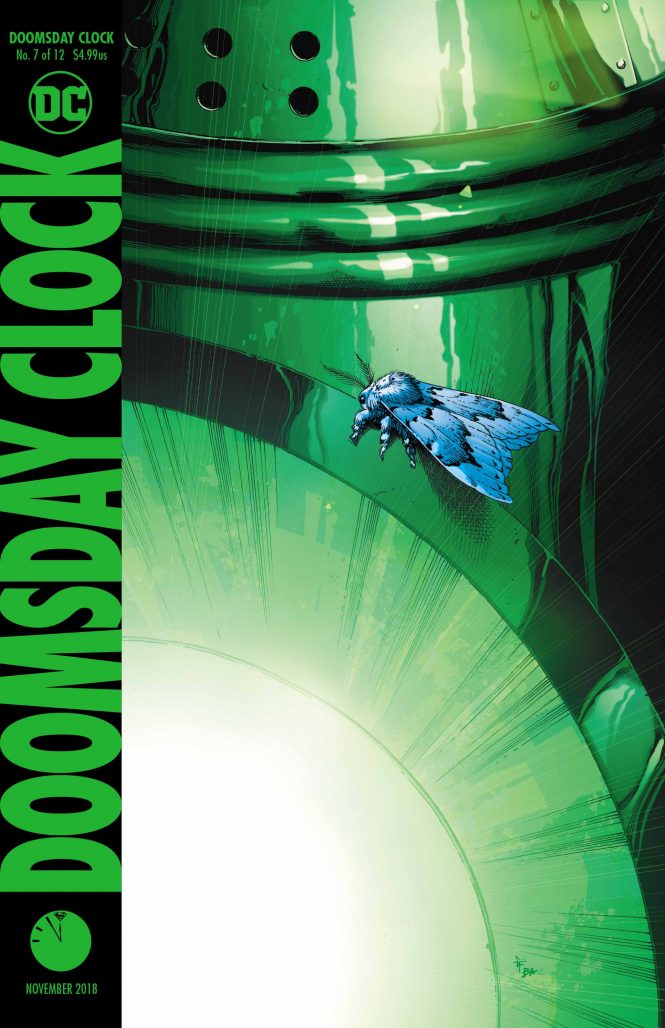






If you mean “horrific”, it’s “grisly”, not “grizzly”.
I think Alex was referencing Jack Kirby’s New Gods character Big Bear: http://dc.wikia.com/wiki/Big_Bear_(New_Earth)
Another book I’m not buying. Question; I read a couple of pages of the new Doomsday Clock, have they been stealing Alan Moore’s writing style the entire time? That is just horrifying…and maybe grizzly.
Thank you for your carefully thought out approach to reviewing, Alexander. I still have not read this issue, but you are right to point out that there is both a subject matter aspect as well as a comics construction aspect that have to be considered. I’ve preordered issue 1, but the subject matter has me seriously questioning this series. I doubt that murdering superheroes is ever an effective storytelling tool, and it sounds like from a comics construction aspect, that Tom King may fail to establish its purpose in issue 1. I worry that the whole thing is for shock value only to have it erased and swept away at the end.
http://www.thecomicregime.com was the first to announce the spoilers for that comic last week. They are good source for comic book speculation.
Comments are closed.